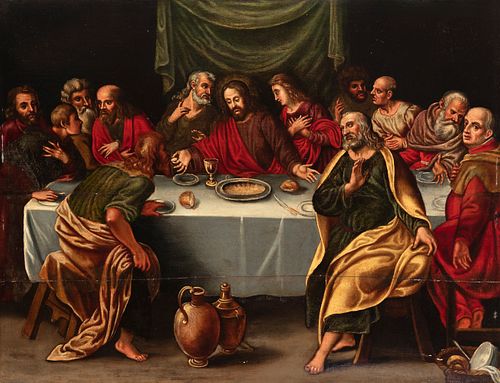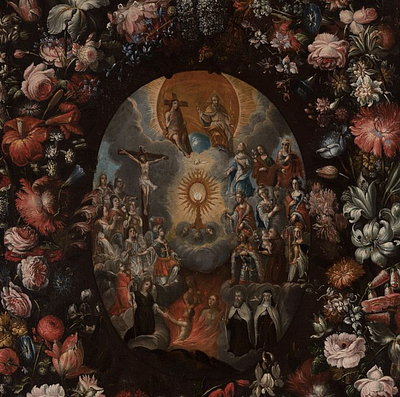Venetian school; 1600 century. "Last supper". Oil on panel.
Lot 45
About Seller
Setdart Auction House
Carrer Aragó 346
Barcelona
Spain
Setdart Subastas was born in 2004 and is currently the first online art auction in Spain with solidity, prestige and reliability guaranteed by our more than 60,000 users. Setdart has a young, dynamic and enterprising team ready to successfully manage the purchase and sale of art works through custom...Read more
Estimate:
EUR€2,000 - EUR€3,000
$2,150.54 - $3,225.81
Absentee vs Live bid
Two ways to bid:
- Leave a max absentee bid and the platform will bid on your behalf up to your maximum bid during the live auction.
- Bid live during the auction and your bids will be submitted real-time to the auctioneer.
Bid Increments
| Price | Bid Increment |
|---|---|
| EUR€0 | EUR€10 |
| EUR€200 | EUR€25 |
| EUR€500 | EUR€50 |
| EUR€1,000 | EUR€100 |
| EUR€3,000 | EUR€200 |
| EUR€5,000 | EUR€500 |
| EUR€10,000 | EUR€1,000 |
| EUR€20,000 | EUR€2,000 |
| EUR€50,000 | EUR€5,000 |
About Auction
By Setdart Auction House
Jul 14, 2021
Set Reminder
2021-07-14 06:30:00
2021-07-14 06:30:00
America/New_York
Bidsquare
Bidsquare : OLD MASTERS
https://www.bidsquare.com/auctions/setdart-auction-house/old-masters-7202
Setdart Auction House sofia@setdart.com
Setdart Auction House sofia@setdart.com
- Lot Description
Venetian school; 1600 century. "Last supper". Oil on panel. Presents repainting. Measures: 50,5 x 66 cm. The Last Supper is one of the most relevant representations in the history of western art. In the first place, because it is the concrete moment in which the sacrament of the Eucharist is established, since Jesus in this supper made the analogy between his body and the bread, and the wine and his blood. Secondly, the mythical scene that was painted by Leonardo, established the basis of Renaissance aesthetics, thus providing a conception of perspective that was hegemonic until well into the twentieth century. In this particular case, the scene reflects this aesthetic based on the Leonardesque composition, and the characters present a similar disposition to the aforementioned one. However, in this work the artist dispenses with the landscape, and places all the protagonists in an inconcrete interior space, dominated by the presence of black. Although all the characters are placed as a frieze, the author has established several planes that provide some depth to the whole. These are defined through the apostles who are in front of or behind the table, and thanks to the anecdotal elements of the foreground, such as the jars, which allude to the moment in which Jesus, prior to the supper, decides to wash the feet of all his apostles. Formally, the scene is part of the academicism, and therefore follows classical rules, the first of which is the great technical quality. Thus, the drawing is rigorous and firm, of great anatomical perfection. The academicism is a direct inheritance of classicism, and hence the predilection for themes such as the one presented here, taken from mythology, although captured from a sensual and decorative point of view far from the solemnity of ancient classical art. Hence also the way of approaching the subject. However, we can appreciate an ideal of beauty that does not start from reality, although the painter's study of nature is undeniable, but it is an idealism based on reality for its sum of experience, that is to say, an aesthetic sublimation that reflects a beauty that transcends reality. The Venetian school was characterized by the use of large formats, where great prominence was given to a grandiose architecture and a luxurious atmosphere defined by soft and sumptuous colors. The scenes of mythological and religious themes in conception recreate in a certain way the Venetian festivities and society.
- Shipping Info
-
In-house shipping available. Please inquire at admin@setdart.com.
-
- Buyer's Premium



 EUR
EUR CAD
CAD AUD
AUD GBP
GBP MXN
MXN HKD
HKD CNY
CNY MYR
MYR SEK
SEK SGD
SGD CHF
CHF THB
THB












